Tiny Home Japan. In recent years, Japan has seen a significant rise in the popularity of tiny homes. This trend can be attributed to a variety of factors, including the high cost of living in urban areas, a desire for a more minimalist lifestyle, and a growing concern for environmental sustainability.
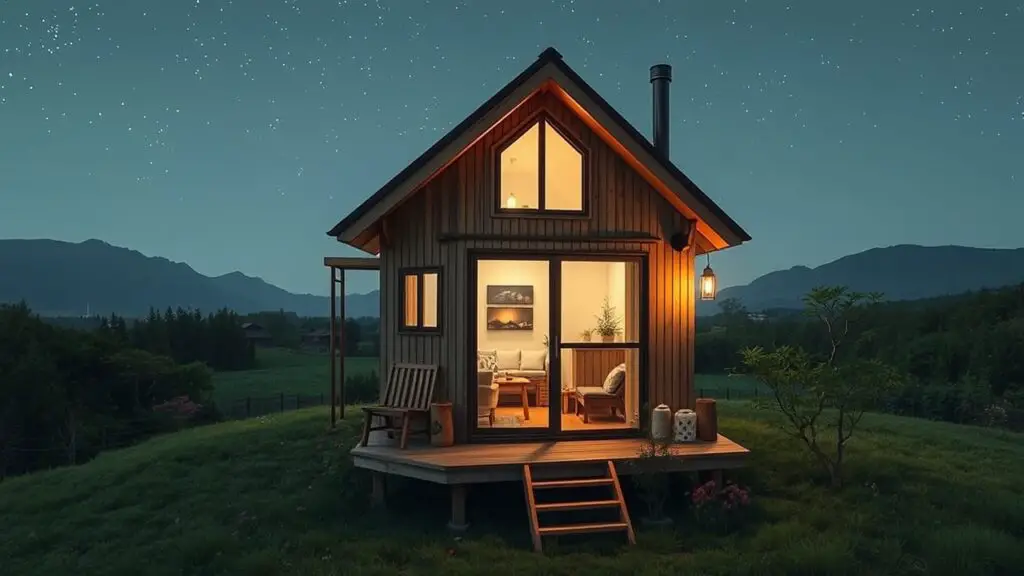
As a result, many Japanese people are turning to tiny homes as a way to live more simply and affordably. These small, compact houses offer a more minimalist lifestyle, with less space and fewer possessions to maintain.
They also provide a more affordable housing option in a country where urban living can be expensive. Additionally, tiny homes are seen as a way to reduce environmental impact and live more sustainably, as they require fewer resources to build and maintain.
Contents
Overall, the trend towards tiny homes reflects a desire for a simpler, more sustainable way of life in Japan.
The tiny home movement in Japan has gained momentum as more people seek alternatives to traditional housing options.
This trend has also been fueled by a growing interest in sustainable living and a desire to reduce one’s carbon footprint. As a result, tiny homes have become a popular choice for those looking to live more sustainably and minimize their impact on the environment.
The tiny home movement in Japan has also been influenced by cultural factors, such as the Japanese concept of “mottainai,” which emphasizes the importance of not being wasteful.
This mindset has led many Japanese people to embrace the idea of living in smaller, more efficient spaces. Additionally, the influence of traditional Japanese architecture and design principles can be seen in many tiny home designs in Japan.
This blend of tradition and innovation has resulted in a unique approach to tiny home living that is both practical and aesthetically pleasing.
Overall, the rise of tiny homes in Japan can be attributed to a combination of economic, environmental, and cultural factors that have led many people to embrace a simpler, more sustainable way of life.
Key Takeaways
- Tiny homes are becoming increasingly popular in Japan, offering a minimalist and sustainable living option.
- Japanese tiny home designs often blend traditional architectural elements with innovative and space-saving features.
- The appeal of tiny living in Japan lies in the desire for simplicity, affordability, and a closer connection to nature.
- Sustainable living in tiny homes is a growing trend in Japan, reflecting a shift towards more eco-friendly and efficient lifestyles.
- While there are challenges, such as zoning regulations and land availability, the future of tiny homes in Japan also presents opportunities for creative solutions and community development.
Exploring the Tiny Home Movement in Japan
The tiny home movement in Japan has gained traction in recent years, with an increasing number of people choosing to downsize and live in smaller, more efficient spaces.
This trend has been driven by a variety of factors, including the high cost of living in urban areas, a desire for a more minimalist lifestyle, and a growing concern for environmental sustainability. As a result, many Japanese people are turning to tiny homes as a way to live more simply and affordably.
The tiny home movement in Japan has also been influenced by cultural factors, such as the Japanese concept of “mottainai,” which emphasizes the importance of not being wasteful.
This mindset has led many Japanese people to embrace the idea of living in smaller, more efficient spaces. In addition to economic and cultural factors, the tiny home movement in Japan has also been fueled by a growing interest in sustainable living.
Many people are choosing to live in tiny homes as a way to reduce their carbon footprint and minimize their impact on the environment. This trend has led to an increase in the number of eco-friendly tiny home designs that incorporate sustainable materials and energy-efficient features.
Overall, the tiny home movement in Japan is a response to a variety of social, economic, and environmental factors that have led many people to seek out alternative housing options that are more affordable, sustainable, and in line with their values.
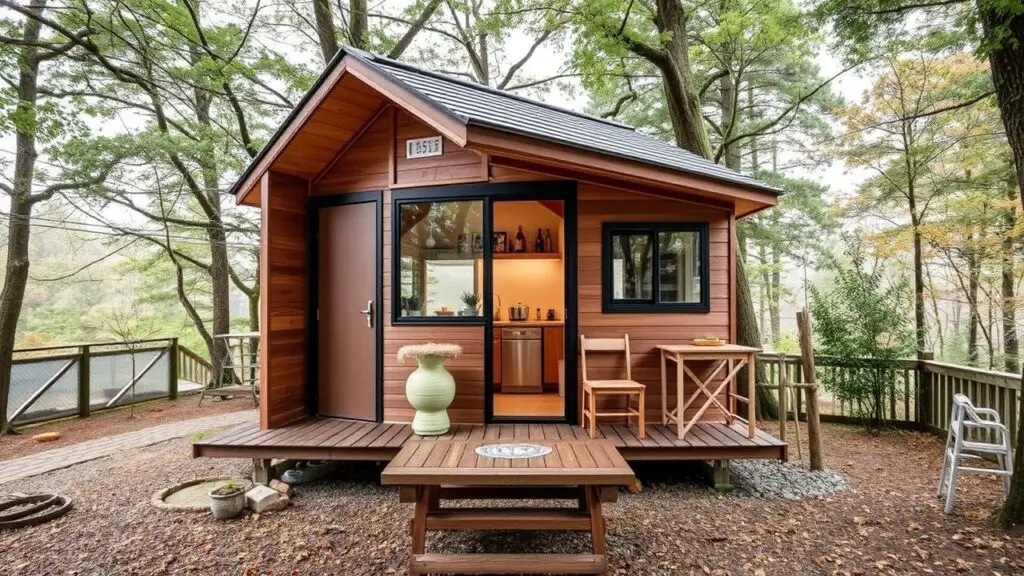
Japanese Tiny Home Designs: A Blend of Tradition and Innovation
Japanese tiny home designs are a unique blend of tradition and innovation that reflect the country’s rich architectural heritage and its commitment to sustainability.
Many tiny homes in Japan draw inspiration from traditional Japanese architecture, incorporating elements such as sliding doors, tatami mats, and natural materials like wood and paper.
These traditional design elements are combined with modern innovations to create efficient, functional spaces that are both practical and aesthetically pleasing.
In addition to drawing on traditional design principles, Japanese tiny home designs also prioritize sustainability and energy efficiency. Many tiny homes in Japan are built using eco-friendly materials and feature energy-efficient appliances and systems.
Some designs even incorporate renewable energy sources such as solar panels or wind turbines to further reduce their environmental impact.
Overall, Japanese tiny home designs are a testament to the country’s ability to blend tradition and innovation in creating spaces that are both culturally significant and environmentally conscious.
The Appeal of Tiny Living in Japan
The appeal of tiny living in Japan can be attributed to a variety of factors, including the high cost of living in urban areas, a desire for a more minimalist lifestyle, and a growing concern for environmental sustainability.
Many people are drawn to the idea of living in a tiny home as a way to reduce their expenses and live more simply. In addition to economic factors, the appeal of tiny living in Japan is also influenced by cultural values such as “mottainai,” which emphasizes the importance of not being wasteful.
This mindset has led many Japanese people to embrace the idea of living in smaller, more efficient spaces. Furthermore, the appeal of tiny living in Japan is also driven by a growing interest in sustainable living.
Many people are choosing to live in tiny homes as a way to reduce their carbon footprint and minimize their impact on the environment.
This trend has led to an increase in the number of eco-friendly tiny home designs that incorporate sustainable materials and energy-efficient features.
Overall, the appeal of tiny living in Japan is a response to a variety of social, economic, and environmental factors that have led many people to seek out alternative housing options that are more affordable, sustainable, and aligned with their values.
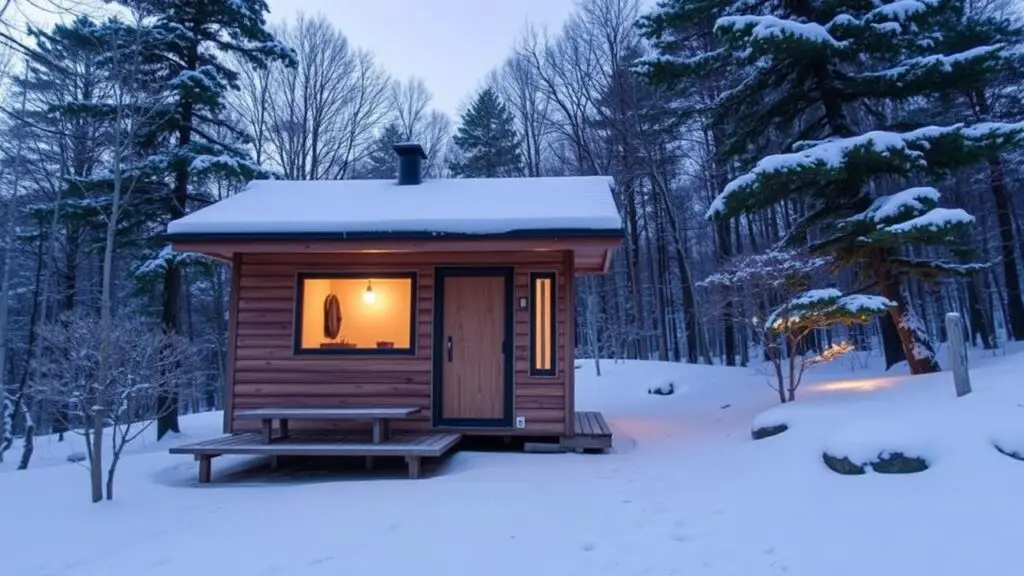
Sustainable Living in Tiny Homes: A Growing Trend in Japan
Sustainable living in tiny homes has become a growing trend in Japan as more people seek out alternative housing options that are more affordable and environmentally friendly.
Many Japanese people are choosing to live in tiny homes as a way to reduce their carbon footprint and minimize their impact on the environment.
This trend has led to an increase in the number of eco-friendly tiny home designs that incorporate sustainable materials and energy-efficient features.
Some designs even incorporate renewable energy sources such as solar panels or wind turbines to further reduce their environmental impact. In addition to eco-friendly design features, sustainable living in tiny homes also involves adopting a more minimalist lifestyle that prioritizes simplicity and efficiency.
Many people who choose to live in tiny homes are drawn to the idea of downsizing and decluttering their lives, which can lead to reduced consumption and waste.
Overall, sustainable living in tiny homes is a growing trend in Japan that reflects a broader shift towards more environmentally conscious lifestyles.
Tiny Home Communities in Japan: Embracing Minimalist Living
Tiny home communities have been popping up across Japan as more people embrace the idea of minimalist living and seek out alternative housing options that are more affordable and environmentally friendly.
These communities provide residents with the opportunity to live in small, efficient spaces while also fostering a sense of community and shared values.
Many tiny home communities in Japan prioritize sustainability and eco-friendly living, with residents often coming together to share resources and support one another in their efforts to live more simply.
In addition to promoting sustainable living, tiny home communities also offer residents the chance to connect with like-minded individuals who share similar values and priorities.
This sense of community can be especially valuable for those who are looking for a sense of belonging and support as they navigate the challenges of living in smaller spaces.
Overall, tiny home communities in Japan are embracing minimalist living as a way to create more affordable, sustainable housing options while also fostering a sense of community and shared purpose.
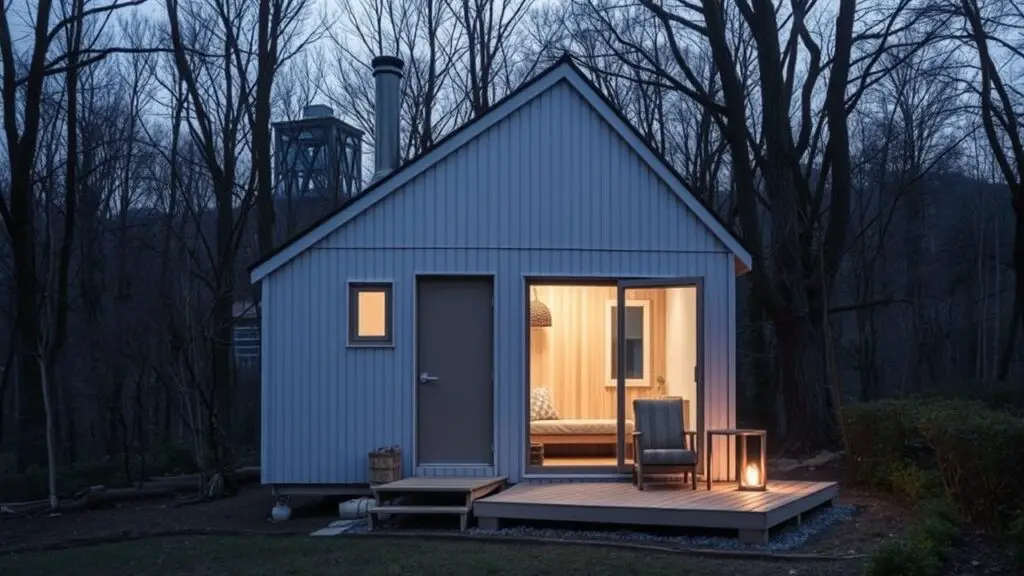
The Future of Tiny Homes in Japan: Challenges and Opportunities
The future of tiny homes in Japan presents both challenges and opportunities as this housing trend continues to gain momentum.
One challenge is the need for greater acceptance and support from local governments and zoning regulations, which can often be restrictive when it comes to alternative housing options such as tiny homes.
In order for the tiny home movement to continue growing in Japan, there will need to be greater advocacy for policy changes that make it easier for people to build and live in tiny homes.
Despite these challenges, there are also opportunities for the future of tiny homes in Japan, particularly when it comes to promoting sustainable living and affordable housing options.
As more people become aware of the benefits of living in smaller, more efficient spaces, there is potential for greater demand for tiny homes as an alternative housing option.
Additionally, there is an opportunity for continued innovation and creativity when it comes to designing eco-friendly and aesthetically pleasing tiny homes that meet the needs and preferences of Japanese residents.
In conclusion, the rise of tiny homes in Japan reflects a broader shift towards more sustainable, affordable housing options that prioritize simplicity, efficiency, and community.
As this trend continues to grow, there will be opportunities for greater advocacy for policy changes that support alternative housing options such as tiny homes while also fostering innovation and creativity when it comes to designing eco-friendly living spaces that meet the needs and preferences of Japanese residents.
The challenges of tiny homes in Japan include navigating strict building codes and zoning regulations, as well as addressing the cultural preference for larger, more traditional homes.
However, there are also opportunities for innovation and creativity in design and construction, as well as the potential for addressing issues of affordability and sustainability in the housing market.
As the trend grows, there is also the opportunity to create a sense of community and connection among tiny home dwellers, as well as to explore alternative ways of living that prioritize simplicity and minimalism.
Overall, the future of tiny homes in Japan holds both challenges and opportunities for redefining the concept of home and living spaces in a rapidly changing society.
Tiny house living guide
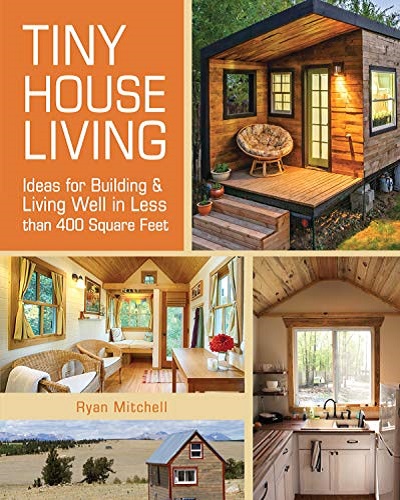

How to build a tiny house
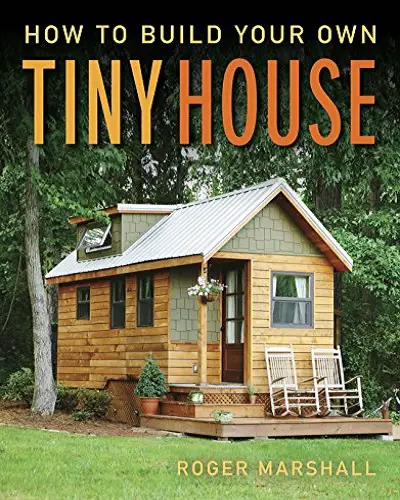
FAQs
What is a tiny home in Japan?
A tiny home in Japan is a small, compact living space that is typically under 500 square feet in size. These homes are designed to maximize space and minimize waste, often incorporating innovative storage solutions and multi-functional furniture.
Why are tiny homes popular in Japan?
Tiny homes are popular in Japan due to the country’s limited land availability and high population density. Additionally, the minimalist lifestyle and focus on sustainability align with the principles of tiny home living.
What are the benefits of living in a tiny home in Japan?
Some benefits of living in a tiny home in Japan include lower living expenses, reduced environmental impact, and the ability to live a more minimalist and clutter-free lifestyle. Tiny homes also offer the opportunity for greater mobility and flexibility in terms of location.
Are there any regulations or restrictions for tiny homes in Japan?
In Japan, there are regulations and restrictions that govern the construction and placement of tiny homes. These regulations vary by region and it’s important for individuals interested in building or living in a tiny home to research and comply with local laws and zoning regulations.
What are some popular design features of tiny homes in Japan?
Popular design features of tiny homes in Japan include sliding doors, built-in storage, lofted sleeping areas, and compact kitchens and bathrooms. Many tiny homes also incorporate natural materials and traditional Japanese design elements.

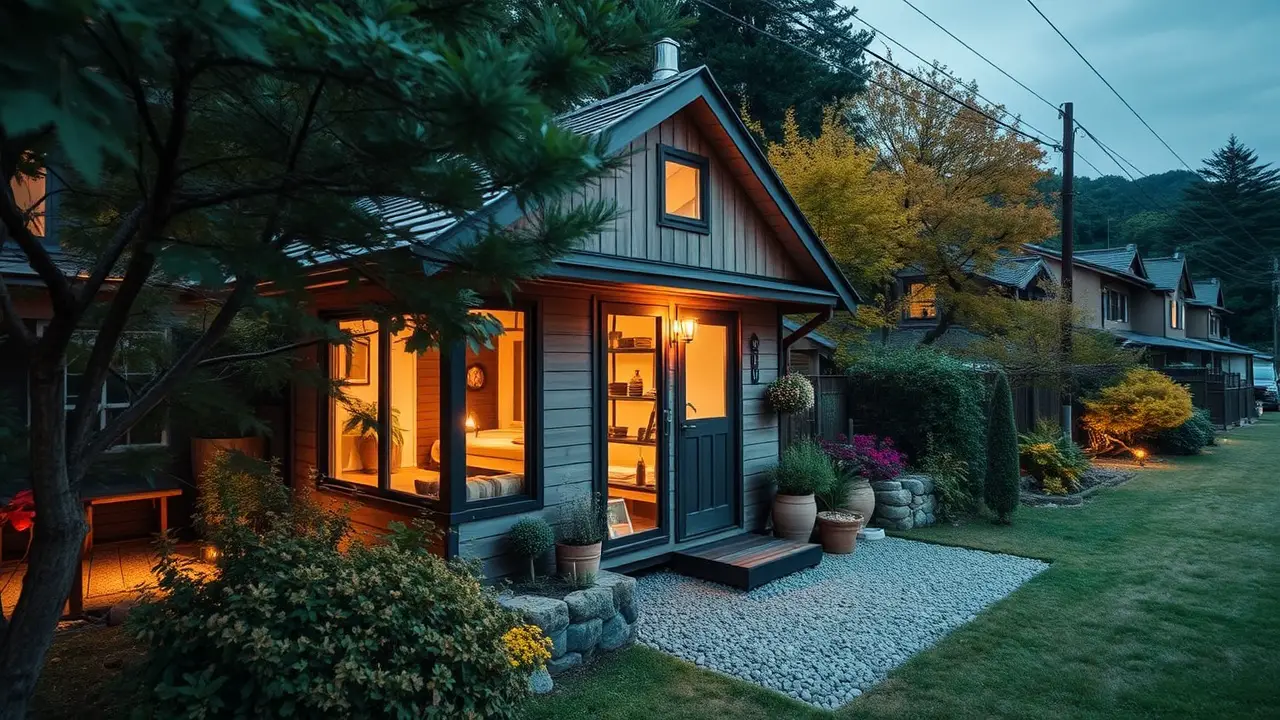
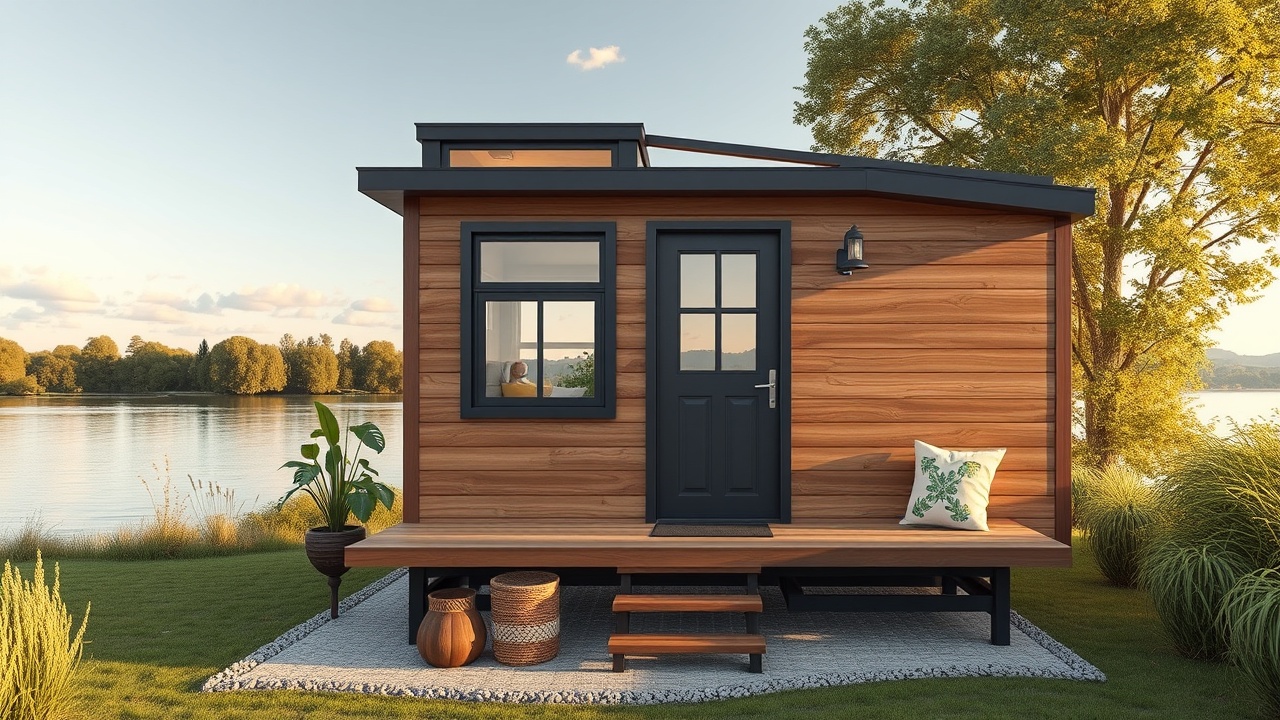
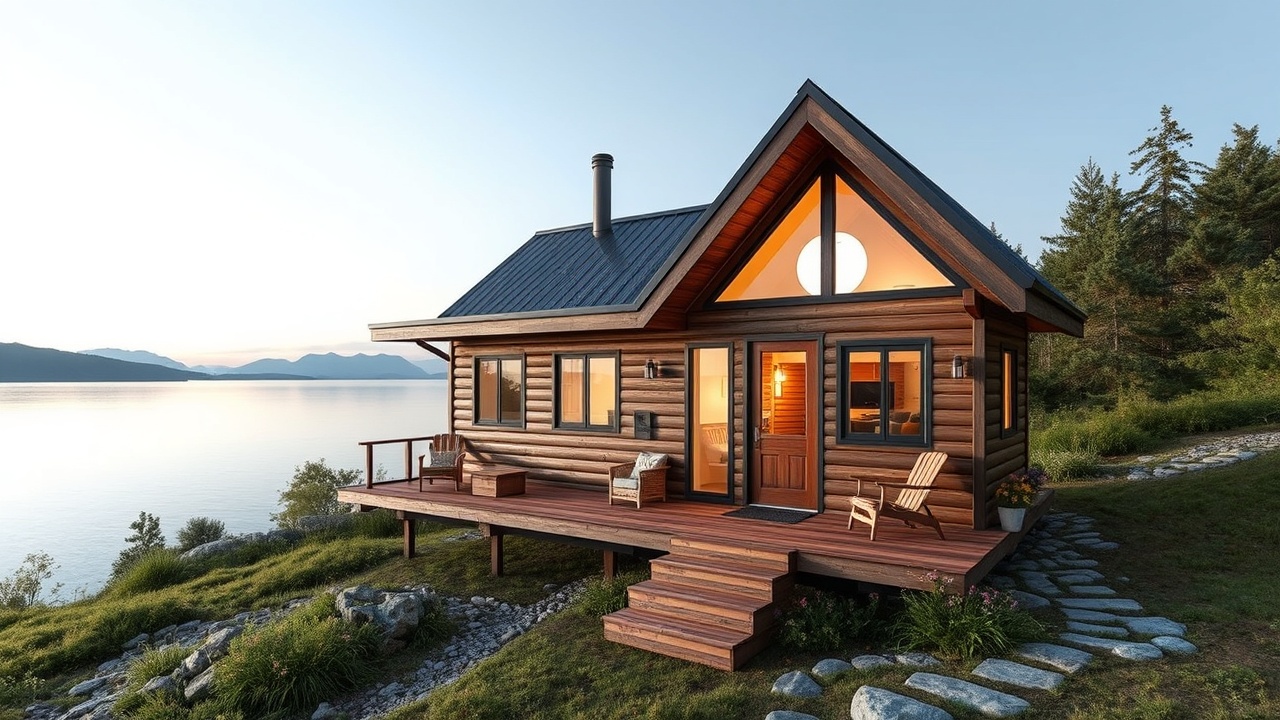
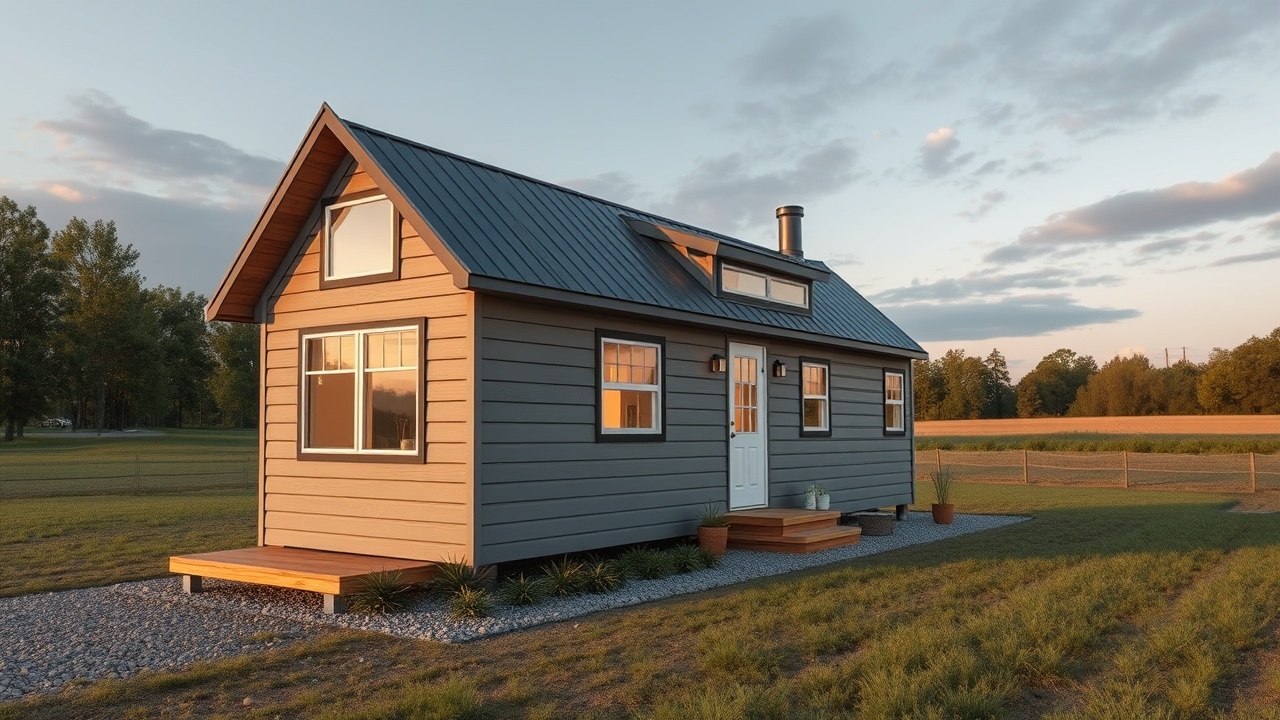
Leave a Reply